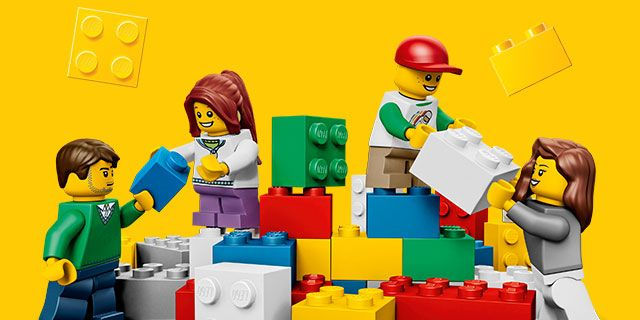Agile Always. Scrum Kind of Past. But What Is the Future?
- Arany Mák

- May 16
- 4 min read
Updated: Nov 8
The origin story
Scrum didn’t begin in a software lab, it started on a rugby field, at least metaphorically. In 1986, Japanese professors Takeuchi and Nonaka observed how top-performing companies like Honda and Canon tackled product development: not in a linear relay, but like a rugby team, moving the ball together in tight formation. Their Harvard Business Review article described this as a flexible, team-driven approach that could outpace traditional methods. That was the spark.
Fast forward to 1993: at Easel Corporation, Jeff Sutherland, John Scumniotales, and Jeff McKenna brought that vision to life. They created the first Scrum team, building a new rhythm of work, fast feedback, tight loops, and team autonomy.
By 1995, Scrum was unveiled to the world. Ken Schwaber and Sutherland presented The Scrum Development Process at the OOPSLA conference, and the idea began to spread.

Then came 2001, the snow-covered lodge in Snowbird, Utah, where 17 software renegades drafted the Agile Manifesto. They weren’t creating a methodology, they were rejecting the status quo. Agile was a mindset shift:
Individuals and interactions over processes and tools
Working software over comprehensive documentation
Customer collaboration over contract negotiation
Responding to change over following a plan
Scrum became the most accessible way to implement this mindset. It offered just enough structure: roles, events, artifacts, to make Agile feel tangible. Teams could deliver faster, adapt to change, and collaborate more deeply.
And it worked. For a while.
But here’s the twist: What if the very structure that helped Agile scale is now holding it back?
Scrum: Yesterday’s game-changer, today’s struggle?
While Scrum continues to drive thousands of teams, its rigid structure is starting to show signs of wear.
Framework fatigue: Teams are increasingly overwhelmed by the "rules of Scrum" rather than empowered by them. The daily standups become status meetings. The ceremonies become box-ticking rituals.
Mismatch with modern workflows: Continuous delivery, DevOps, AI-assisted development, and platform teams don’t map neatly to sprint cadences or fixed roles.
Agile-as-Certification: The rise of certifications diluted intent. Scrum became a credential, not a craft.
A 2023 study by Digital.ai found that while 87% of organizations “use Agile,” only 34% report that it's delivering significant improvements in business outcomes. The delta? Rituals without agility.
Enter the post-agile movement. It’s not a rejection of Agile, it’s an evolution of it. Post-agile thinkers ask: What does agility look like when it’s native to the organization, not layered on top?
Key trends shaping the post-agile future:
Continuous discovery & delivery over iterations
Product discovery isn’t a sprint goal, it’s continuous.
Dual-track agile is gaining traction: separating discovery (understanding what to build) and delivery (building it).
Think: Teresa Torres’ “Continuous Discovery Habits” becoming the new PO Bible.
Team topologies & platform thinking
Matthew Skelton & Manuel Pais' Team Topologies reframed org structures for flow.
Agile isn’t about cross-functional “Scrum teams” anymore; it's about stream-aligned, platform, complicated subsystem, and enabling teams.
Outcome-Driven Structures
OKRs and value stream management are replacing rigid backlogs.
Success is measured by impact, not story points.
Marty Cagan’s vision of empowered product teams is becoming mainstream.
Automation, AI & DevOps
CI/CD and DevOps mean deployment is continuous, why wait for a sprint review?
GitHub Copilot, GPT, and similar tools change how code is written, reviewed, and reasoned.
Agile must now augment the augmented team, rethinking estimation, collaboration, and even story writing.
Spotify famously ditched traditional Scrum for their Squads, Tribes, Chapters, and Guilds model, optimizing for autonomy and alignment. Atlassian embraced dual-track Agile and OKRs to align product teams more closely with business outcomes.
Let’s explore the frameworks and models gaining traction in a world where agility is an expectation, not a goal:
Framework/Model | Key Idea | Why It’s Gaining Attention |
Shape Up (Basecamp) | Shaping problems over weeks, betting on them | Avoids backlog overload, embraces autonomy |
OKRs (Objectives & Key Results) | Aligning teams to outcomes, not tasks | Strategic agility over delivery speed |
Team Topologies | Organizing for flow and interaction modes | Rethinks org design to remove friction |
Flow Framework | Value stream metrics over story velocity | Puts focus on business results |
Lean UX | Hypothesis-driven development | Perfect match for product-led orgs |
Dual Track Agile | Separate lanes for discovery and delivery | A more realistic model for real work |
Agile isn’t going away. But it is shedding its framework skin to become something more fluid, integrated, and contextual.
Here’s where we’re headed:
From framework to fabric: Agile will be embedded in how teams think, not how they meet.
From delivery to discovery: Success is about solving the right problem, not delivering fast.
From teams to ecosystems: Cross-company collaboration, open platforms, and ecosystems will demand agility beyond the team level.
From roles to capabilities: “PO,” “Scrum Master,” or even “Team” may dissolve in favor of capability-based squads.
From ceremonies to conversations: Async collaboration, AI-driven documentation, and outcome dashboards will replace rigid rituals.
As AI takes over more routine tasks (coding, testing, even backlog refining), agility will mean rethinking the human role in product development. Emotional intelligence, creative problem solving, and ethical thinking will be the new agile superpowers.
The future isn’t anti-Scrum. It’s post-Scrum.
It’s not about rejecting Agile. It’s about making Agile invisible, a natural state of adaptive, collaborative, empowered teams doing meaningful work at the speed of relevance.
The real challenge ahead? Letting go of what worked then, to make room for what’s needed now.
So ask yourself not, "Are we doing Agile?" but, "Are we becoming more adaptive, impactful, and human every day?" Because that’s what the future of Agile demands.



Comments